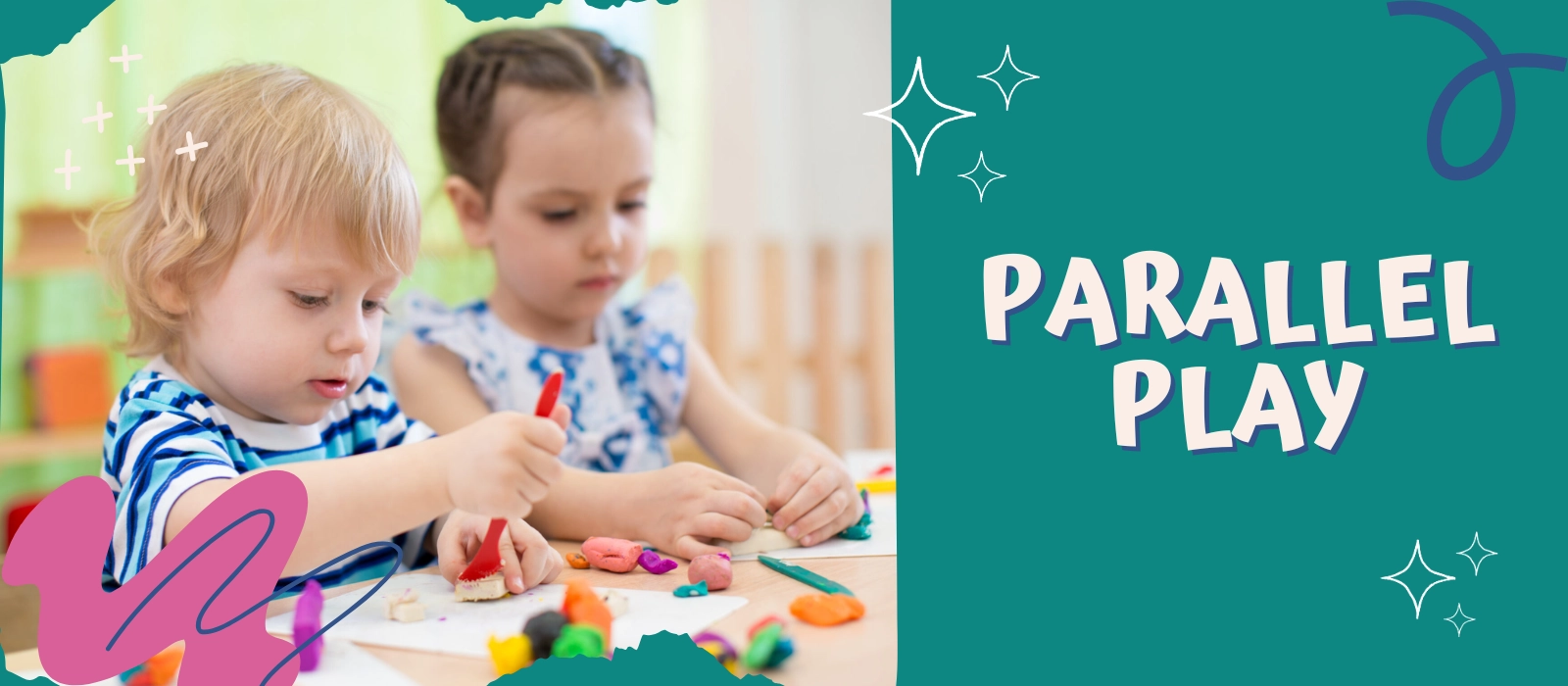Why do toddlers sit side by side without really playing together? Is something wrong when children play alone but near others? Could it be a sign of social issues—or just a normal phase? Should we worry, or observe quietly?
It’s called Parallel Play, and it’s a completely natural and crucial stage in early childhood development. It may look like kids are ignoring each other, but in reality, they are absorbing social cues, building awareness of others, and preparing for more advanced interaction. Understanding parallel play helps educators and parents support healthy emotional and social growth.
Parallel Play is not just a random behavior—it’s one of the essential milestones in a child’s journey toward becoming socially capable. In early years, children go through various stages of play, and Parallel Play is that silent yet powerful phase where children develop observation skills, empathy, and an awareness of social boundaries. As the founder of XIHA Furniture, a company specializing in high-quality preschool furniture, I’ve observed how the right environment can enhance this developmental phase. The more we understand it, the better we can design classrooms, choose the right furniture, and support children through each play milestone.
What Is Parallel Play?
Parallel play is a type of play behavior commonly observed in toddlers, where children play adjacent to each other without directly interacting. Unlike cooperative or associative play, parallel play involves minimal verbal communication and no shared goals. Yet, this stage is far from passive. It is active, engaged, and serves as the foundation for future social interaction. The term “parallel play” was first defined by sociologist Mildred Parten in her 1932 study on social participation in preschool-aged children, which identified it as one of six progressive stages of play behavior.
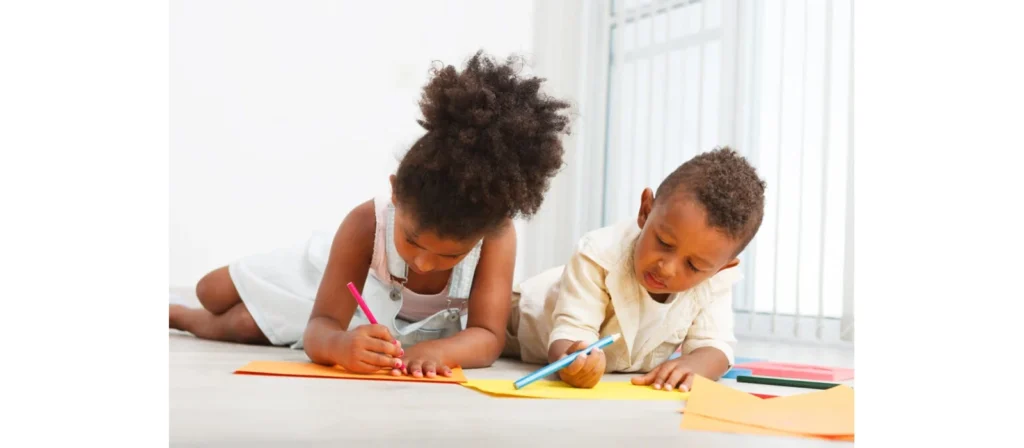
In developmental psychology, the definition of parallel play is clear: it’s when children, typically between the ages of 2 and 3, engage in similar activities side by side without influencing each other’s actions. Although they may be using the same toys or sitting closely, each child is focused on their own activity. This behavior is completely normal and part of healthy child development.
According to the APA Dictionary of Psychology, parallel play means children are learning through observation and imitation rather than direct cooperation. They might look at what the other child is doing, mimic it, or change their behavior subtly in response, but they won’t actively work together or share materials.
From a practical standpoint, when I observe parallel play in kindergartens we furnish through XIHA, I often notice how the setup of the room—like defined play zones and easily accessible toys—can encourage this type of play naturally. For example, two toddlers may sit at our double-sided wooden block table, each building their own tower, glancing occasionally at the other’s creation. There’s no spoken coordination, but a mutual social awareness is clearly developing.
Parallel play psychology definition emphasizes this as a critical step in transitioning from solitary play to more interactive forms of play. It provides a safe space where children can explore social proximity, test emotional responses, and gain confidence in the presence of peers.
When Do Babies Parallel Play?
One of the most common questions I get from parents and early childhood educators is: When does parallel play begin? The answer lies in understanding early developmental milestones. Generally, parallel play starts around age 2, but it can be observed slightly earlier or later depending on the child’s environment, personality, and exposure to peers. This stage often lasts through age 3 and gradually transitions into associative and cooperative play as the child’s communication and social skills develop.
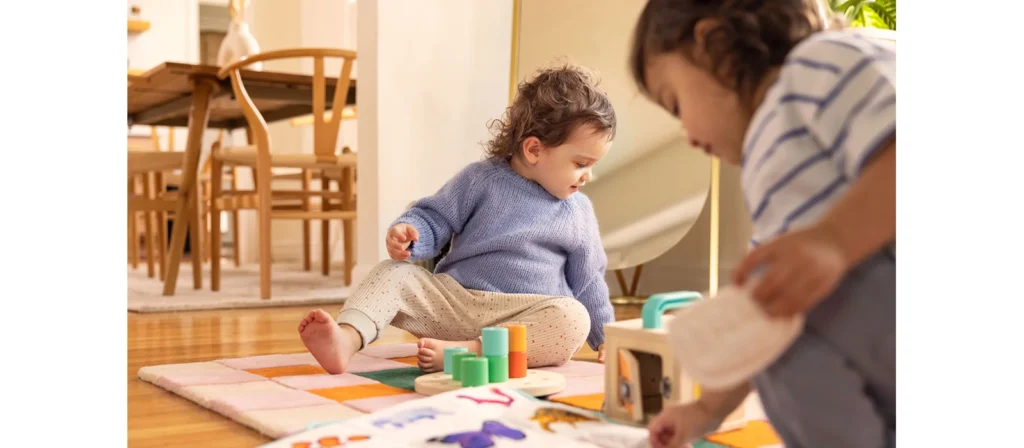
Infants begin life with unoccupied play, gradually move into solitary play, and by the time they hit toddlerhood—especially between 18 to 30 months—they naturally shift into parallel play. It’s not taught; it’s instinctual. Children begin to notice their peers more, become curious about others’ actions, and start mimicking behavior even if they don’t directly engage.
During this stage, it’s normal to see two children seated next to each other, each playing with their own toys, rarely talking or interacting directly. However, this parallel playing is a vital learning process. They are watching, learning turn-taking indirectly, and developing early empathy. They start to understand the concept of shared space and acceptable behavior around others.
It’s important to remember that every child develops at their own pace. Some may linger in parallel play a bit longer, while others may quickly transition to more interactive forms of play. As long as the child is showing interest in others and expressing joy in their own activities, there’s usually no cause for concern.
The CDC’s Developmental Milestones Guide also supports this timeline and encourages caregivers to provide opportunities for side-by-side play starting in toddlerhood. Through our work at XIHA Furniture, we’ve seen how parallel play thrives in thoughtfully designed spaces—areas where kids have individual play materials but are seated in proximity, such as double-seated activity desks or sand tables with multi-user access.
Understanding the parallel play age range helps educators and parents recognize whether children are on track developmentally, and how best to nurture social growth during this subtle, yet important, stage.
Parallel Play Examples
Seeing parallel play in action brings clarity to its role in early development. A classroom filled with toddlers often looks like gentle chaos to the untrained eye, but an educator sees it differently—every child engaged in parallel play is learning by observing, exploring boundaries, and forming their own identity.
Let me share a few real-life parallel play examples that I often witness in preschools we’ve worked with:
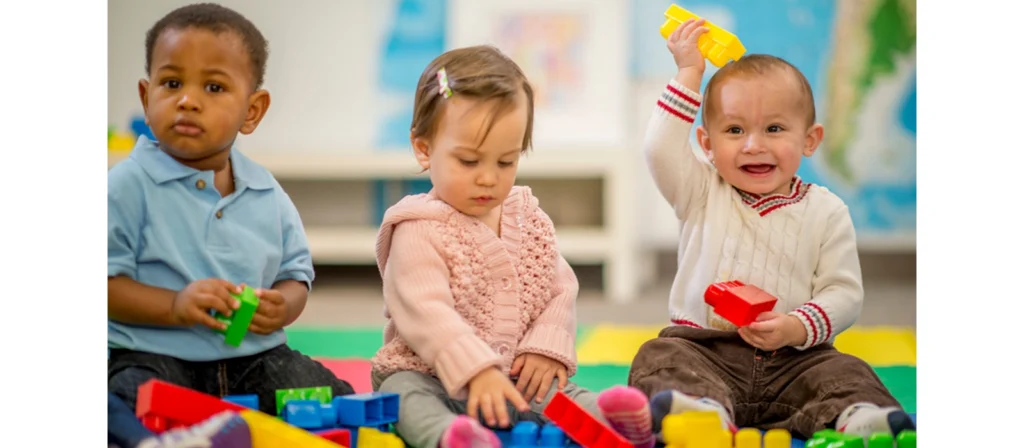
Example 1: Side-by-Side Building Blocks
Two children sit across from each other at a rectangular table. Each has a pile of wooden blocks and begins to build towers independently. They’re not speaking. However, one child glances over, sees the other’s tower, and adds a similar piece to theirs. Though they aren’t building together, they are silently influencing each other. This is classic parallel play.
Example 2: Art Corner
At a painting easel with two stations, toddlers paint side by side. They choose their colors independently, but one notices the other mixing red and yellow and tries it too. There’s no conversation—only mutual curiosity. This copying behavior is a clear indicator of social observation at work.
Example 3: Outdoor Sandbox
In the sandbox, children dig with their own shovels in separate areas. One is filling a bucket while the other scoops nearby. Occasionally, they peek at each other’s sand creations. Again, they are physically near, performing the same task, and occasionally watching—but not interacting directly.
Example 4: Reading Time
During circle time or independent reading, each child holds their own board book while sitting on a shared mat. They are reading silently (or babbling aloud), but occasionally look over to see what page another child is on. Some may turn pages faster to “catch up,” subtly imitating peer behavior.
Example 5: Puzzle Play
Two toddlers sit at the same low table with identical puzzles. Each works on their own set, but one occasionally glances over when the other fits a difficult piece. That look leads them to try a similar strategy with their own puzzle—mimicking success without direct collaboration.
These examples may look uneventful, but they’re rich with early social learning. They show how children mirror each other, explore social boundaries, and begin to understand the presence of others. Parallel play helps build the foundation for cooperation, turn-taking, and shared goals later on.
At XIHA, when designing playroom layouts, we encourage parallel play by offering shared yet separate spaces. Our modular furniture often includes double desks, art tables with dual easels, and semi-partitioned reading corners. These intentionally structured environments allow children to engage in parallel play comfortably, with soft visual exposure to their peers.
As educators and parents, it’s important not to rush children through this phase. Instead, provide gentle encouragement, model friendly behaviors, and most importantly, create environments that support independent side-by-side play.. Instead, provide gentle encouragement, model friendly behaviors, and most importantly, create environments that support independent side-by-side play.
Childhood Play Development Stages
Understanding the full range of early childhood play stages helps us appreciate how parallel play fits into a broader developmental journey. Below are the six primary stages of play behavior as defined by Mildred Parten, plus two essential comparisons that help distinguish parallel play from more interactive forms of play.
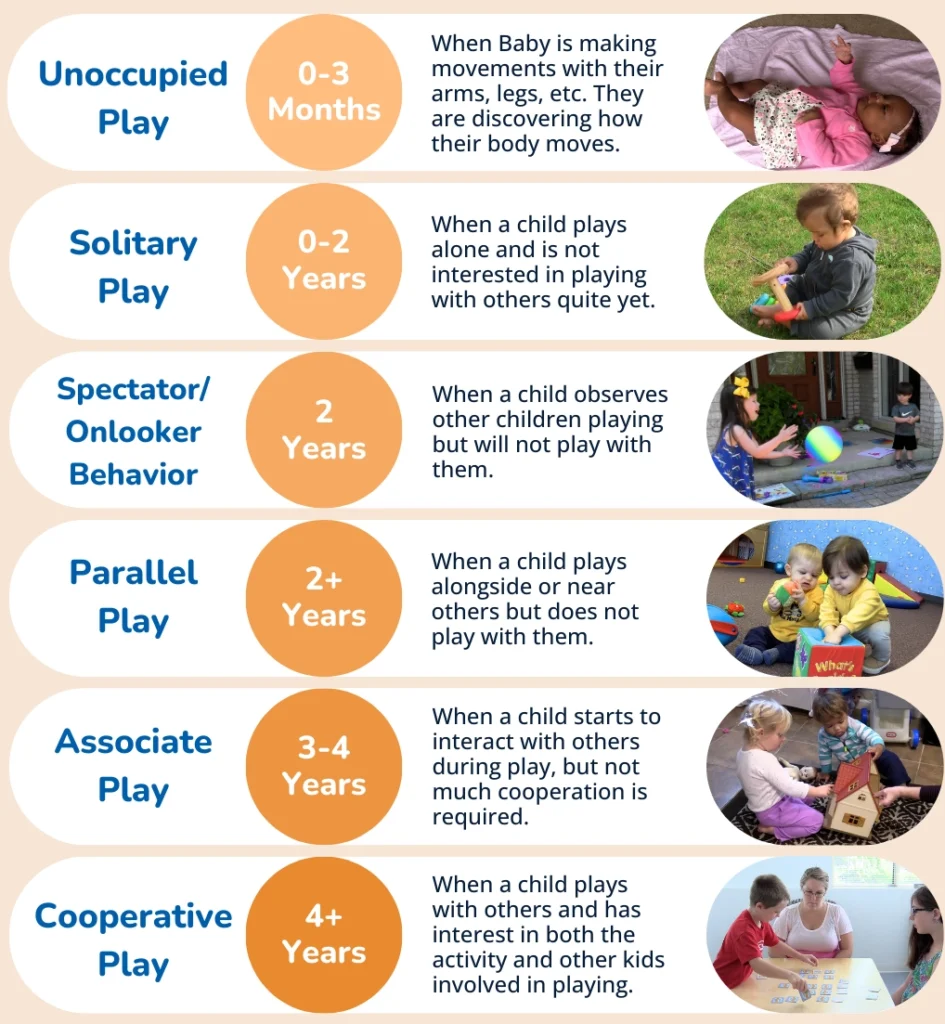
Unoccupied Play (0–3 Months)
In the earliest months, babies engage in random movements with no clear objective. While it may not look like play to adults, it’s the beginning of sensory exploration. Infants might wave their arms, kick their legs, or gaze at their surroundings. This unstructured motion builds brain-body connections that support more deliberate activity later.
Solitary Play (0–2 Years)
During this stage, children play alone with little interest in what others are doing. They may be deeply focused on manipulating a toy or experimenting with cause and effect. This stage is crucial for developing focus, independence, and fine motor skills.
Spectator/Onlooker Play (Around 2 Years)
Children begin watching others play without joining in. They observe facial expressions, actions, and sometimes ask questions. This stage marks a rise in social curiosity and prepares children for side-by-side interaction. It’s often a precursor to parallel play.
Parallel Play (2+ Years)
At this stage, toddlers play side by side with similar toys or activities but don’t directly interact. They may observe and mimic, but they’re not cooperating or sharing goals. This is where imitation, early empathy, and spatial awareness are sharpened.
Associate Play (3–4 Years)
Children begin to interact more. They may share toys or comment on each other’s play, but there’s still no shared objective. Conversations start to develop, and children learn to take turns and practice flexible thinking. This often overlaps with later stages of parallel play.
Cooperative Play (4+ Years)
This is the most advanced form of early childhood play. Children work together toward a shared purpose—building something, playing a game with rules, or creating a shared story. It requires communication, negotiation, and teamwork.
Parallel Play vs Cooperative Play
While both involve physical proximity, parallel play is individual and cooperative play is collaborative. In cooperative play, children must engage directly, often assigning roles (“You be the teacher, I’ll be the student”) and resolving conflicts. In contrast, parallel play allows children to develop confidence and basic social skills before they take on these challenges.
Parallel Play vs Associative Play
The difference lies in interaction level. In associative play, children are starting to share toys, make comments, and loosely coordinate actions, while in parallel play, they remain in their own world. Associative play marks the beginning of back-and-forth interaction, while parallel play is still observational.
These stages aren’t rigid. Children may shift back and forth depending on their mood, setting, or comfort level. What matters is that each stage builds a foundation for the next—and that adults create safe, inspiring environments to support this growth.
How Educators and Parents Can Support Parallel Play
Supporting parallel play is not about forcing interaction—it’s about offering the right conditions for social awareness to grow naturally. Both parents and early childhood educators can play an essential role in this developmental stage through intentional planning, space design, and gentle encouragement.

Create Parallel-Friendly Environments
The physical setup of a play space can make or break the effectiveness of parallel play. Children need defined areas where they can engage in individual activities side by side. In our work at XIHA Furniture, we’ve designed furniture such as double-sided tables, tandem easels, and side-by-side seating benches that make it easy for children to be close without requiring direct interaction.
Look for furniture and play stations that:
- Provide individual workspaces within a shared area
- Use soft dividers or angled shelves to allow visibility but maintain separation
- Minimize clutter and overstimulation
Choose the Right Materials
Certain toys are naturally suited to parallel play. These include:
- Building blocks
- Drawing boards or coloring sheets
- Pretend play props (like individual cooking sets)
- Toy cars and ramps
- Sensory bins with scoopers and containers
Materials should promote independent exploration while making imitation easy. Avoid toys that require turn-taking or complex social negotiation during this phase.
Observe Without Intervening
It’s tempting for adults to “guide” children toward interacting, but in the parallel play stage, observation is more valuable than interference. Watch for signs of imitation, glances, and proximity. These are the true markers of social development during this time.
Children need space to engage in their own play while being aware of peers. The more relaxed and safe they feel, the more likely they’ll explore social possibilities at their own pace.
Model Positive Social Behavior
Even if children aren’t directly interacting, they’re watching adults carefully. Demonstrating polite interaction, emotional regulation, and collaborative behavior can offer indirect cues that children may start to mimic in their own time.
Respect Individual Timelines
Some children will move quickly from parallel play to associative play, while others might stay in the parallel stage longer—especially if they are shy, introverted, or neurodiverse. The key is not to rush the process. Offer repeated exposure to safe social settings and allow the child to initiate progression when ready.
Collaborate With Families and Caregivers
Educators should communicate with families about what parallel play looks like and why it matters. Many parents mistakenly worry that a lack of interaction signals a problem. Helping them understand the value of parallel play builds confidence and encourages continuity between home and classroom environments.
At XIHA, we often recommend that our clients—especially kindergarten owners and directors—create designated zones in their classrooms where children can engage in independent but socially aware activities. These areas, equipped with thoughtfully designed preschool furniture, allow children to transition naturally from observation to interaction.
Supporting parallel play is about respecting the rhythm of childhood development, designing spaces that promote curiosity without pressure, and trusting that each child is on their own timeline.
From Parallel to Cooperative: How Educators Guide the Transition
Parallel play doesn’t just fade away—it evolves. For educators, understanding how to nurture the transition from parallel play to cooperative play is essential to building confident and socially skilled learners. While children naturally progress through play stages at their own pace, intentional teaching strategies and environmental cues can make this shift smoother and more enriching.
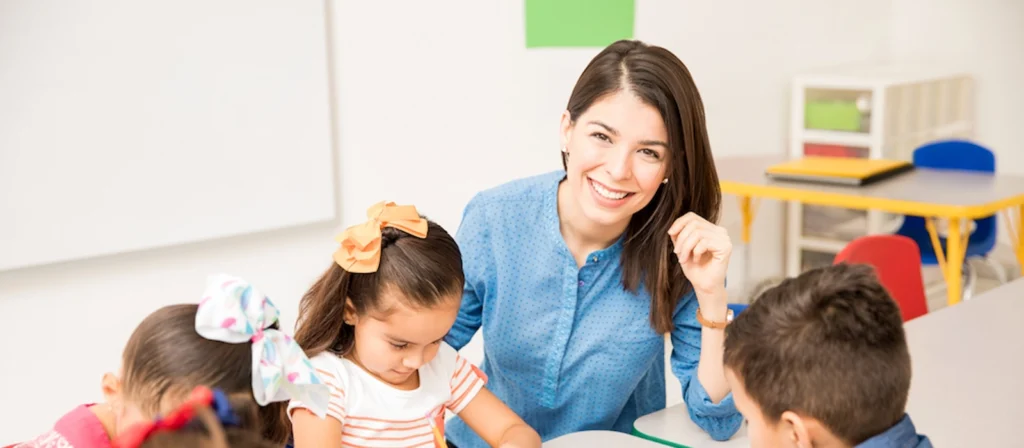
Encourage Gradual Collaboration
Start by introducing group activities that allow for both solo and shared engagement. For example, setting up a large floor puzzle where children can work on different sections independently—but eventually connect the pieces—promotes interaction in a pressure-free way. Teachers can also prompt with gentle suggestions like, “Can you help your friend find that piece?” or “What are they building?”
Use Open-Ended Materials
Materials that can be used both independently and collaboratively—like building blocks, pretend play sets, and loose parts—are perfect for this transition. At XIHA Furniture, we design activity stations with modular functions that allow children to first play side-by-side, then shift naturally into interactive collaboration.
Observe and Reflect
Teachers should observe cues such as children mimicking each other, showing toys, or reacting to peers’ expressions. These are natural signals they’re ready for more interaction. Educators can reflect these behaviors back to the class, reinforcing the idea of shared experience: “I see you both like building with the blue blocks. Maybe you can build something together!”
Introduce Small-Group Activities
Small-group learning is an ideal format for easing out of parallel play. Activities like role play, storytime discussions, or group art projects gently increase interaction without overwhelming children. Keeping groups small ensures each child has space to participate at their own comfort level.
Parallel play lays the groundwork—but educators create the bridge. With the right approach, what starts as quiet, individual play blossoms into meaningful, cooperative learning.
How Parallel Play Influences Kindergarten Furniture and Space Design
At XIHA, we believe furniture isn’t just furniture—it’s a developmental tool. Parallel play is directly affected by how classrooms are arranged, how space is divided, and how children are guided through proximity and independence.
Zoning for Side-by-Side Engagement
One of the most effective strategies for supporting parallel play is creating defined “zones” within a room. Art corners, building block stations, reading nooks, and pretend kitchens each offer opportunities for children to play side by side without pressure. Our kindergarten clients often use mobile partitions, soft rugs, and storage cubbies to create these psychological boundaries.
Double-Access Stations
Furniture designed for dual or group use—like double-easel art boards, back-to-back sand tables, or two-sided shelving—encourages physical proximity while maintaining independent focus. Children engage in parallel tasks while still seeing and sensing each other’s presence.
Quiet Corners with Visual Connection
Not all children are ready for immediate social interaction. We recommend adding calming areas with clear visual access to peer activity. Semi-transparent panels, low seating dividers, and curved walls allow shy children to observe before participating, which is key during the parallel play stage.
Modular, Flexible Layouts
Furniture that can be reconfigured allows educators to evolve the environment with the children’s development. As play transitions from parallel to associative or cooperative, XIHA’s modular tables, adjustable shelves, and convertible seating systems provide long-term value and flexibility.
In essence, good space design doesn’t tell children how to play—it invites them to explore when they’re ready. When schools prioritize the flow of movement, line of sight, and furniture function, they create classrooms that work in harmony with natural developmental stages.
Conclusion
Parallel play is far more than toddlers playing “alone together.” It’s a powerful and necessary stage in early childhood development that lays the groundwork for empathy, social cognition, and future collaboration. By understanding its role, creating intentional environments, and trusting the process, we give children the space they need to grow into confident, socially capable learners.
At XIHA Furniture, we’re proud to support this journey through smart, safe, and developmentally aligned furniture solutions tailored to every stage of play. Because when you design with child development in mind, even the quietest moments—like parallel play—become deeply meaningful.

